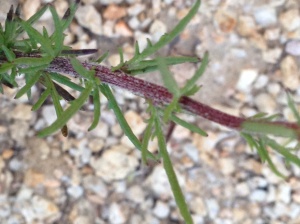The Banting Wars
It’s been a busy time at work and most of the time I’ve been chugging back and forth to Europe instead of spending this marvellous month of May on the farm. Last Saturday I took a day off and went with Liz to the Franschhoek Literary Festival where we saw a splendid debate between Prof Tim Noakes and Prof Lionel Opie, entertainly chaired by Dennis Davis.
South Africans will need no introduction to Prof Noakes but for the benefit of everyone else, he advocates a way of eating that is very low carb, medium protein and very high fat. He’s written a couple of entertaining bestsellers; it is the hot topic here and the large hall was overflowing. It was particularly fun to go with Liz as we sit firmly on opposite sits of the debate. I don’t agree with that way of eating at all (a serial dieter I’ve been through all them all, Montingnac, Atkins, Dukan and many variations thereof) and none of them help me to lose weight. I haven’t tried the “Banting” way, as Prof Noakes calls it, but as is the case with so many diets I don’t know anyone who has lost weight on it after the first couple of weeks or so. Some people claim to feel marvellous on it though and it may be true that it is a good diet for people who are diabetic or pre-diabetic. Perhaps also for people who eat seriously bad diets full of sugar and fast food in the first place. Noakes is highly persuasive and passionate and Liz thought he won the debate. I heard a lot of theories and a lot of conclusions but the facts didn’t seem to justify the conclusions. Proof once more that you hear what you want to hear! Noakes uses himself as an example all the time, so perhaps the only safe conclusion is that it may suit insulin resistance high performance atheletes like him. Opie pointed out that the ONLY comparative research on the high fat approach that has been done was recently in Cambridge. The conclusion was that a low-carb high-fat diet didn’t help the participants to lose weight, but in a group of talented Cambridge students, there was a noticable decrease in brain function, particularly memory.
So what has all this got to do with fynbos flowers? Well the flowers and the run go together, and all that goes with a healthy lifestyle, hence our interest in the debate. Liz and I followed all this talk of diet with a splendid lunch where she stuck to her Banting and I ate a smoked salmon rosti with a poached egg and hollandaise sauce. And we shared a divine bottle of Chenin Blanc.
On the way home the light was amazing and I stopped on the dirt road to take this photo of the shining grasses in the autumn vines which are at their most beautiful at this time of year. A golden highway in the winelands.
Back on the farm I took the dogs for a long walk on the mountain as the sun started to set. Maebh and Jemima Chew set about hunting every last gerbil, full of glee and joy as they bounced around the place.
We are moving in to the serious season for fynbos now that we’ve had good rain. One is another tiny lobelia – I didn’t have room to fit my fynbos book in my bag on this trip, but it is different from the one we posted a couple of weeks ago.
The Protea nerifolia is now in flower all over the farm and will continue to flower for months now. Quite a hairy chap, it’s always particularly handsome when it catches the light, as in this photo in the very last rays of the sun.
I can be silly in my joy when my favourites emerge and I see them for the first time in the season. One of these is Microloma tenuifolia which has emerged winding its tentacles around a protea. This tiny flower is as smaller or smaller than the nail on my little finger, little flashes of pinky coral in the lush green fynbos.
Rupert Koopman from Kirstenbosch kindly sent a comment to let me know that this daisy that I posted last week is Anthanasia trifurcata – thank you!














